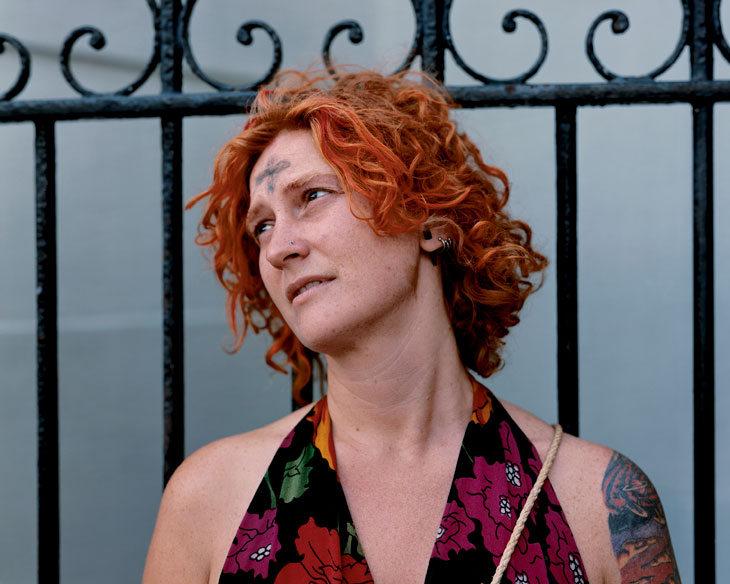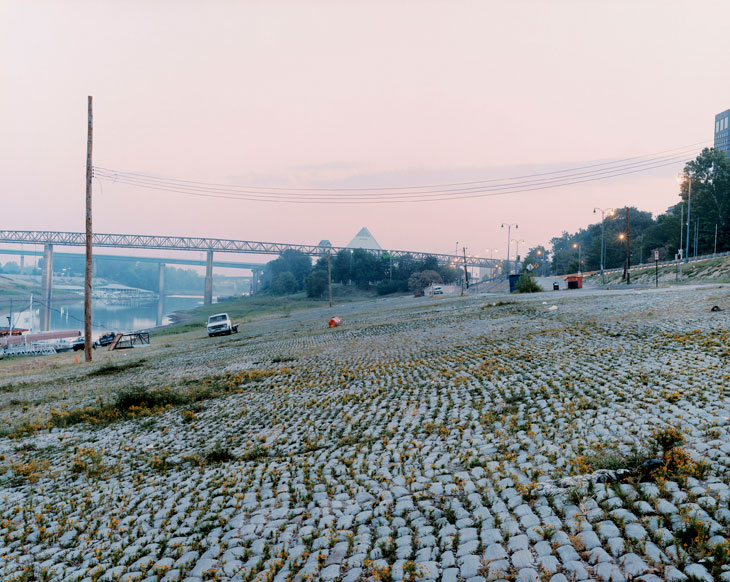Adleyn, Ash Wednesday, New Orleans, Louisiana is a photograph by Alec Soth from his photobook Sleeping by the Mississippi. It shows a woman with her head tilted up toward the sky with a small black cross marked on her forehead. There’s a distant look in her eyes suggesting she’s distracted by a thought rather than looking at anything in particular.
When Alec Soth spoke to her, though, she said ‘I’m not even Catholic, these are cigarette ashes’, and started to laugh.
Adelyn, Ash Wednesday, New Orleans, LA (2002), Alec Soth © Magnum/Alec Soth. Image courtesy of Beetles+Huxley and Sean Kelly Gallery, NY

Information beyond the moment of a photograph can usually only be guessed at. A certain amount is given in the frame, but the rest of an image’s resonance comes from the viewer’s own knowledge, or lack of knowledge, about an individual or place.
Alec Soth’s Sleeping by the Mississippi covers an area of the United States of which I have no experience. Over multiple trips, Soth travelled the full length of the river, from its source in Minnesota, through the mid-western states, past St Louis, Memphis, Baton Rouge and New Orleans, to the point where the river meets the Gulf of Mexico.
Some of Soth’s work from this series is currently on show at Beetles+Huxley in London. The book, which was recently reprinted by Mack, shows off the project to better effect, giving space – albeit limited – to the short texts Soth recorded during the trips. These consist of snippets of conversations he had with his subjects about their lives; Soth would often ask them about their dreams and record the details his landscape shots couldn’t reveal visually. Soth seems to want the photographs to remain the focus of the project and present a mental map of the area and its people, but these extra details are important.
Sunshine, Memphis, TN (2000), Alec Soth. © Magnum/Alec Soth. Image courtesy of Beetles+Huxley and Sean Kelly Gallery, NY

Lenny, a construction worker from Minneapolis who Soth has photographed topless in his kitchen with his huge Rottweiler, dreams of living ‘to be 100 and still look the way I do now’. Joshua, a prisoner in Angola State Prison, has ‘Preacher Man’ scrawled onto the collar of his T-shirt and a tattoo of a tear next to his left eye. The tattoo, we are told, is in remembrance of having killed someone: he is serving a 40-year sentence for murder. Sunshine, we learn, left home at the age of 14 shortly after the birth of her son, leaving him with her parents and moving to Memphis where she took on her recorded name. Soth’s shot of the Mississippi as it flows past Memphis is a slightly underwhelming scene until you learn it is where the singer Jeff Buckley died: he was washed away by the current while swimming in the river. Themes of poverty, loneliness and religion are present in many of the photos. Sheila, a pastor’s daughter from Minneapolis, wouldn’t be photographed unless Soth accompanied the picture with text saying ‘If you don’t have Jesus in your life, you are truly missing out on a blessing. He will set you free; accept him today.’
Harbor Marina (Morning), Memphis, TN (2000), Alec Soth. © Magnum/Alec Soth. Image courtesy of Beetles+Huxley and Sean Kelly Gallery, NY

Soth’s footnotes are his way of dealing with what might be seen as a limitation of photography when treated as an art form rather than as a method of documentation. But it also reminds us of photography’s principal strength: its ability to show us the parts of the world and of people’s lives which we might otherwise never know.
‘Alec Soth, Sleeping by the Mississippi’ is at Beetles+Huxley, London, until 21 October.



